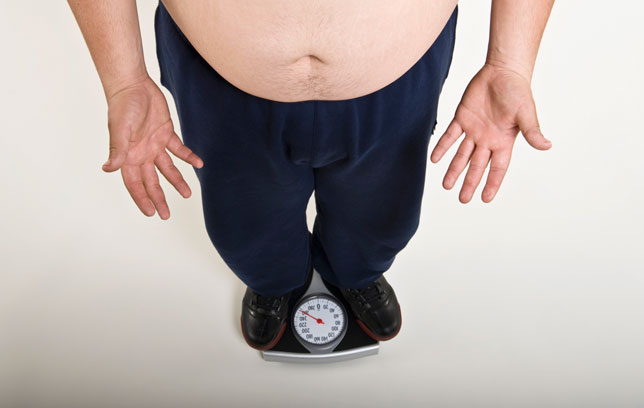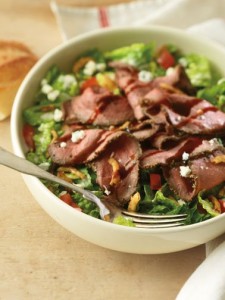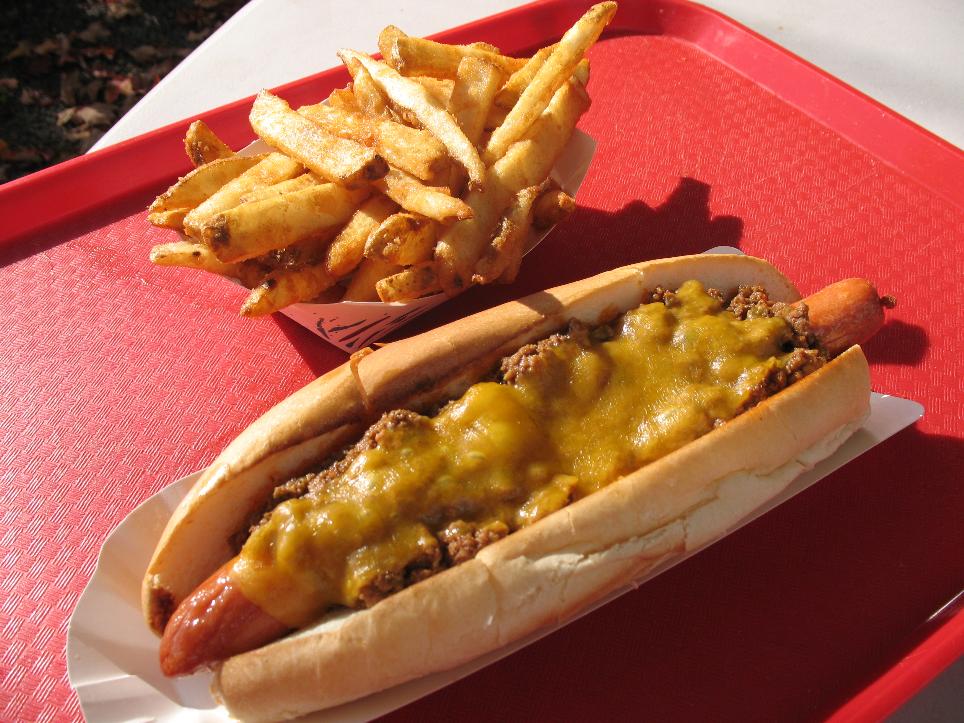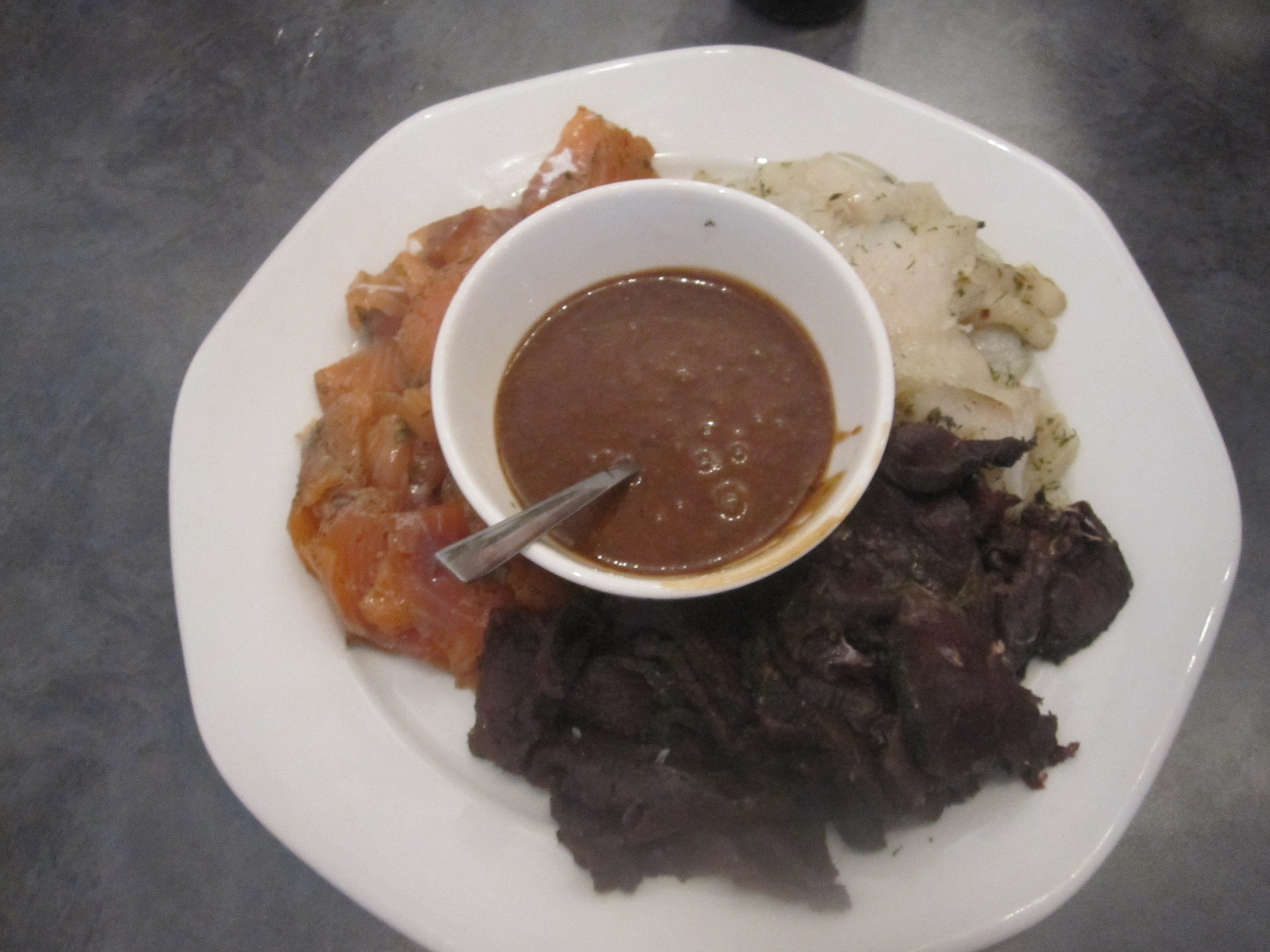How a Fat Nation Can Slim Down:
At an all-you-can-eat Italian buffet in upstate New York, the feature attraction is abbondanza—an abundance of lasagna, ziti, chicken wings, shrimp, salads, soft drinks, and dozens of pizza varieties, including one topped with bananas, cinnamon, and soft ice cream.
The patrons display a certain abbondanza, too, as they huddle at their tables. Many of them look bearlike—a slug of flesh around the backs of their necks, and their legs spread to cradle the body part known in slang as the FUPA, or fatty upper pelvic (or cruder term) area. The ceiling lights up with digital fireworks. But the patrons hardly notice as they struggle to their feet and shuffle to the buffet for another round.
I don't hate these people, despite the title I gave my article in last month's Men's Health—"I Hate Fat People." I've come to realize that our surroundings, our society, and even our economic system have created a world that makes it too easy for people to become fat. Perhaps all the blame doesn't belong on those patrons' rounded shoulders.
One of the diners, a lean, 50-year-old Cornell University professor named Brian Wansink, Ph.D., prudently chooses a small plate. Wansink, who studies eating behavior, says we make more than 200 such minor food decisions every day, mostly without thinking. (Hence his book Mindless Eating.) One of his studies found, for instance, that heavier customers at just this sort of buffet tend to take large plates instead of small ones, serve themselves immediately instead of checking out the food first, and sit facing the buffet at an open table, not in a booth. (And men, according to a study of dating couples, often think that eating big is a sign of being manly, studly, or even insatiable.)
And yet Wansink piles his plate with highcalorie stuff, topped, as a sort of farewell kiss to prudence, with a low-cal salad dressing. Later he goes back for seconds, plus two slices of pizza. Full disclosure: That banana ice cream pizza? It's mine. This buffet is just too much to resist—a couple of days' worth of calories for a price, $12 a head, that's less than a couple of hours' pay, even at minimum wage.
And right there you have the sweet downfall of life in the modern age--and perhaps the key to global obesity. We live in what some experts describe as an "obesogenic" environment—a world geared to make us fat. Food is ridiculously cheap. Where feeding ourselves cost about 20 percent of household income in 1960, we spend less than 12 percent today, including what we spend on eating out and groceries. Moreover, it's the wrong food that's become most economical (particularly high-calorie fats, oils, and sugars), not fresh fruits and vegetables.
At the same time, physical labor has largely vanished from our lives. Manufacturing is down from a quarter of all jobs in 1970 to less than 10 percent today. Agriculture shrank from 40 percent of jobs in 1900 to less than 2 percent in 2000. Our ancestors earned their daily bread by the sweat of their brows. We earn our daily doughnuts by pushing buttons on keyboards.
It would be heaven, if it weren't killing us: Two-thirds of Americans are now overweight or obese; this resulted in an extra $147 billion in health-care costs in 2008 alone. A third of men and 40 percent of women born in this century in the United States will become diabetic, experts say, meaning they'll probably die debilitated and before their time. After tobacco, being overweight is the second leading preventable cause of cancer.
In the great debate over what to do about it, the "personal responsibility" camp says the remedy lies in changing our own behaviors. The obesogenic-environment crowd says we can no longer do it by ourselves. Marketing tactics and the abundance of cheap, energydense snacks and beverages have conspired for decades to make us sick, they contend, and that's where the big changes need to happen.
It is at times a strange debate, with once-wholesome food companies now often classed with tobacco merchants as purveyors of unhealthy products skillfully targeted to boost demand. Major food corporations, threatened with fat taxes and tighter regulation, have become ardent advocates of exercise and consumer education. This sometimes puts health advocates in the odd position of arguing that exercise is not the main answer to the obesity epidemic.
But let's start with the personal responsibility side. An old friend, a former competitive swimmer gone to fat, is in the hospital having his hip replaced. Another friend spent the other day at the hospital helping her husband prepare for a coronary bypass. For lunch a few days before the surgery, the man, who is diabetic, ate a doughnut a la mode, much like a lung cancer patient who smokes a cigarette on his way to chemotherapy. Their son, who is in his early 30s, does not understand why he already has high blood pressure.
I don't mean to pick on them, because we all have the same problem: On the primal level of appetite, the idea that tasty, convenient, low-cost foods may someday kill us just does not compute. We see something that looks good and want to eat it now, deeply discounting what may happen 30 to 40 years down the road. Choosing healthy foods instead, and finding the balance between what we eat and what we work off in our daily lives, is by contrast a highly abstract calculation that requires long-term willpower.
Wansink talks about the diet "you don't know you're on." He's the man who does studies on how we decide when to eat (or stop eating), like his famous one with soup bowls that were imperceptibly refilled through a hidden tube (folks ate more from them). Wansink has examined dozens of cues that can lead us to eat too much.
The key question about obesity, he says, is "What can reasonably be done by a person tonight? You're not going to change capitalism. You're not going to eliminate food companies and go back to the days of picking berries. So what can you do tonight?" We can eat 200 to 300 calories more or less from one day to the next without noticing, Wansink says. That's how we grow huge in the first place. But using little tricks to work this "mindless margin" is also a way to become thin.
Wansink's studies all led to his basic rule that large packages and containers unleash large appetites: bowls of snacks, beakers of booze, dessert platters—any container. Even advocates of moderation like bartenders and physicians tended to supersize in his studies. "The answer is to use a smaller container," he says. It also helps to separate yourself from food. Move cookies from eye level to the back of the cabinet. Break up the jumbo box of food into smaller portions. Leave serving bowls on the kitchen counter instead of the table. "It makes people think twice about whether they want to have that second, third, or fourth helping," he says.
Many casual-dining chains have switched from short, wide glasses to tall, thin ones to avoid the overpouring effect. Some companies have found profit in the 100-calorie snack pack. And companies are increasingly reducing sugar or salt without trumpeting it on the package, he says, and customers rarely notice. Today's Golden Crisp cereal might taste different from the Super Sugar Crisp we ate years ago. "But we don't have side-by-side comparisons, so we don't say, 'Wait a minute, it's not as mind-numbingly brain-rushful as it was 12 years ago.'"
Given the scale of the crisis, though, are any of these efforts enough? Childhood obesity now affects 17 percent of the school-age population in the United States, up from 5 percent before 1980. One child in three is overweight. To some experts, like psychologist Kelly Brownell, Ph.D., director of Yale University's Rudd Center for Food Policy and Obesity, small plates and voluntary reforms by food companies won't cut it.
Brownell argues that the best way to change our obesogenic environment is by taking on the big drivers of obesity in the food industry, and by that he means using fat taxes and regulatory reforms. There is precedent for this large-scale action, he says, in the face of such a threat to public health—compulsory vaccinations for schoolchildren, community fluoridation of water to fight tooth decay, and the decadeslong battle against tobacco. "Children were being harmed, and society felt justified stepping in," he says. It's the same now, he argues, with obesity.
Sweetness and fat are the two dietary delights we crave most, and food manufacturers are ingenious at finding new ways to deliver them to us. They approach the marketplace—your belly and mine—with what can seem to critics like a feedlot mentality. It's not that they intend to make us fat. They advertise only to increase market share, they say.
Let's start with sweetness: Sugar was a costly luxury until the 18th century, when mills in Brazil and the West Indies ramped up production, lowering prices and boosting consumption. "The glories of the Renaissance were created on the basis of a teaspoonful per head of sugar per year," Henry Hobhouse wrote in his agricultural history Seeds of Change. The average American consumes 45 pounds of sugar a year--that's 4,900 teaspoons, and no Renaissance in sight.
We also consume 36 pounds annually of a sweetener that wasn't even an option until the 1970s—high-fructose corn syrup, otherwise known as HFCS. For about $1.50, a single 64-ounce Double Gulp soda from 7-Eleven can provide what was once a lifetime dose of sweetener.
But food is cheap and abundant. The food supply in the United States now bulges with an estimated 3,800 calories a day per person, almost twice what we need. So profits often come from getting people to eat more food or food that's more energy-dense—packed with more sweetness, fat, or some unholy union of the two. The handful of corporations that dominate the food market drive up our appetites with relentless advertising, outlets on every corner, bigger portions, and price tinkering to make larger orders seem more appealing, according to a 2004 paper coauthored by Mickey Chopra, M.D., Ph.D., now UNICEF's chief of health.
New products add to the problem. Manufacturers used to introduce about 250 new candy and snack products a year in the United States, Greg Critser reports in his 2003 book Fat Land: How Americans Became the Fattest People in the World. By the late 1980s, that number had jumped to 2,000, fueled in part by the entry of HFCS into the food supply. This corn-based sweetener, which is cheaper to make than cane sugar, has chemical properties that food companies love. It protects frozen foods against freezer burn. It keeps long-shelf-life items—like those in vending machines—fresh tasting. "Using it in bakery products (even in rolls and biscuits that normally contained no sugar) made them look more 'natural'—as if they'd just been browned in the oven," Critser wrote. With the surge of new products, snacking boomed, particularly among people under 40. They now take in more than a quarter of their calories from snacks.
Some research has questioned whether HFCS, the accidental elixir of our feedlot, may disrupt hormones that control appetite and induce people to eat more. HFCS now accounts for 42 percent of the sweeteners in our food and almost all the sweeteners in our nondiet soft drinks.
The average American drinks about 16 ounces of soda a day, up about 33 percent since 1980—and 500 percent from 1950 to 1999. Incredibly, that makes soft drinks the number one food consumed in the American diet, according to the health economist Eric A. Finkelstein, Ph.D., and Laurie Zuckerman, coauthors of The Fattening of America.
"If the average American drank water instead of sugar-sweetened beverages," they wrote, "he would weigh about 15 pounds less than he does now." If tap water seems too plain, brew tea. Convincing the nation to cut back on soft drinks wouldn't end the obesity epidemic. But it would make a good start.
Brownell says a soda tax is a necessary weapon in the war against obesity. About 30 states already tax soda in some form, mostly at rates somewhat higher than other taxed food items. But a Rand Corporation study this year estimated that it would take an 18 percent tax—not the current average of 4 percent—to produce a significant drop in soda consumption. By comparison, taxes on cigarettes account for up to 61 percent of the cost of a pack and have proved highly effective at reducing tobacco use. The beverage industry argues that soda in moderation is not harmful and that such taxes would mainly hurt poor people.
But to Brownell, what's happening now with soda is "precisely what happened" in the debate over tobacco. The evidence connecting sugared drinks to obesity, diabetes, and heart disease is "rock solid," he says, and these drinks are "aggressively marketed, especially to children."
Brownell says beverage companies employ the same kind of strategies that tobacco lobbyists once employed. That includes reliance on so-called citizens groups that are actually fronts for the industry, he says. Among them are Americans Against Food Taxes and New Yorkers Against Unfair Taxes. One prominent group, the Center for Consumer Freedom, actually had its start as a tobacco industry front but is now waging the fight against what it calls "an epidemic of obesity myths."
Beyond soda taxes, the obesogenic-environment camp argues that an important way to fight obesity is to limit the marketing of unhealthy products to children. The beverage industry says it's already doing that voluntarily. Earlier this year it touted a study that found that TV advertising of sweetened drinks to children and teens had dropped by as much as 30 percent over a 4-year period.
But the same study found that advertising targeted at children by fast-food companies was up as much as 20 percent. And a 2007 Kaiser Foundation study found that children typically view 30 to 50 hours of food advertising a year, mostly ads promoting candy, snacks, sweetened cereals, or fast food—and none for fruits or vegetables.
The industry's fallback response? Exercise. Americans are too sedentary and spend too much time in front of the television. The obesity problem wouldn't exist if we all exercised, the CEO of PepsiCo said in a Fortune interview this year. And it's hard to argue with the message that exercise is good. In other words, the problem isn't the food industry; it's you. And there's nothing wrong with our feedlot. You just need to add an exercise wheel.
"There's a tremendous seduction in pointing the finger at somebody else," says Wansink. "If parents can blame the school system for their overweight child, or blame food commercials, or blame fast-food or candy companies, they don't have to say, 'Hey, maybe I'm the one who's messing up, having cookies all over the kitchen counter and letting him eat pizza while he watches TV.' Being able to point at somebody else means we can just go back to doing what we want—which is come home from work and not have to do anything."
But there is a middle ground, and I found it in Somerville, Massachusetts. This American city of 76,000 people is trying to do something about its typically severe obesity problem. I made an appointment with Nicole Rioles, coordinator of the Shape Up Somerville program, whose idea of a media tour means hopping on bikes and riding the city's seven hills and 4 square miles.
City transportation planner Kathleen Ziegenfuss joined us, also on a bike. "It's really quick and you don't have to deal with parking," she said. She outlined a plan to add 10 miles of bike paths and "sharrows" (arrows indicating that bikes and cars have equal rights to the road) this year, and she also described a longer-term plan to extend a community footpath and bike path another 2 1/2 miles through the city, at a cost of $20 million to $30 million.
She mapped out sidewalks that will be widened for pedestrian traffic, and described a program that would shut down some roads to vehicles for community events. (Like dozens of such programs worldwide, it was inspired by the 30-year-old Ciclovia program in Bogota, Colombia.) The city is also working on mass-transit improvements that will put every neighborhood in Somerville within an easy walk to a train or bus.
It was 8 a.m., and kids and parents were taking to the sidewalks in loose packs—"walking school buses," an idea borrowed from Lecco, Italy—to reach class safely and on foot. We pedaled off to a park, one of a dozen the city has added or renovated. For a midmorning snack, we stopped at Amigos Market, which earned a "Shape Up Somerville" sticker for selling packs of sliced pineapple and mango for a buck. For lunch, it was the Neighborhood Restaurant and Bakery, which puts out the huge portions customers like but now displays table cards suggesting that they take half of it home or ask to have it cooked in canola oil instead of butter.
In the city's school system, the food-service director recalled the student boycott when she removed the deep fryer from the high school. (Then kids got used to eating healthier stuff, and lunch program participation increased.) Grade schoolers also eat their vegetables, she said, when she cooks them well and markets them with names like X-Ray Vision carrots—borrowing from Wansink's research showing that our eating habits are unduly influenced by catchy labels.
Later, Rioles and I pedaled to City Hall to visit Mayor Joseph Curtatone, who has not personally accepted the bicycle as his savior. But he hits the gym at 5 a.m. and, at the age of 44, runs a 4:30 marathon. Curtatone wants to change land-use rules that force people to hop into cars and drive to mega-food stores in the suburbs. He wants to bring back neighborhood produce stands. He wants to take major thoroughfares that were turned into high-speed commuter "on-off ramps" to nearby downtown Boston, and recapture them for the people of Somerville. He thinks the streets should be safe enough to let "free-range kids" run out the door to play.
"Our goal is not to tell you what to eat," he says. "Our goal is not to tell you how to act. Our goal is to develop systems that give you the best choices, and make those choices easier for you." Despite the vast scale of the change, he says, the important thing is to make sure "every step you take, all your strategic attacks, are aligned to this overall goal," which he likes to sum up in a phrase: "Eat smart, play hard."
On the way out the door, we bump into George Landers, the superintendent of buildings and grounds, a department traditionally staffed by big-bellied men in thrall to internal combustion engines. Not an easy sell, I figured. But Landers says he and his wife walk an hour every morning, not counting the walk to work, and eat healthier food. At 60, he's dropped 40 pounds, trimmed his belt size from 46 to 40, and cut his diabetes meds and blood-sugar level by half and his blood pressure by a third. "I have more energy now than I've had in years," he adds. "My doctor says I'm a miracle."
Can that miracle work for our entire big-bellied country? "It takes decades to make a change," Rioles warns. "If we can influence 100 small changes in the course of the day," she says, "we can help people make healthier choices." And if those changes add up, maybe we will lose weight the way we got fat, almost without noticing it.
America's Worst Feedlots
Avoid the pig-out pitfalls at these five offenders
1 Shula's Steak House
Eat a 48-ounce steak here and join an exclusive club—but trust us, you'll pay for it. The chain says it doesn't have the nutritional stats, but we found that a 48-ounce porterhouse trimmed to 1/2-inch fat weighs in at about 4,000 calories. People empowered with calorie counts on menus ate fewer calories than those without the info, according to a 2010 study by Yale researchers.
2 Red Robin
Every gourmet burger you order includes a side of bottomless steak fries. Request a fry fill-up twice and you've downed 868 calories. Half of the gourmet burgers are over 1,000 calories—with the fries, that's almost an entire day's worth of calories in one sitting. Filling up on carbs before a meal may deactivate your appetite-control cells, according to a 2008 study in Nature.
3 CiCi's Pizza
This Italian-food chain prides itself on its $5 endless pizza buffet, which includes deep-dish and macaroni-and-cheese pies (170 calories per slice). For dessert, there is apple pizza (150 calories per slice) and cinnamon rolls (140 calories). Remember: Even occasional food binges may alter your body's ability to store fat, making it harder to avoid weight gain, a 2010 Swedish study says.
4 Regal Cinemas
As if a large popcorn weren't enough to satisfy movie munchies, this theater offers the option to refill that bucket for free. You're more likely to eat more food when distracted, according to Cornell research, and that includes staring at the big screen. Make it dinner and a movie instead of the opposite and you'll be better prepped to avoid in-movie snacking.
5 Claim Jumper
This sit-down chain features giant portions, including a beef-rib supper (2,253 calories) and a chocolate-chip calzone (1,794 calories). According to new research from the United Kingdom, premeal food cues—like the sight of food coupled with appetizing smells wafting from the kitchen—may physiologically encourage you to eat a larger portion.
-
Diet Strategies: Stop Food Cravings
The stomach signals hunger, but your brain controls your cravings. Put
-
The Simplest Workout Motivation Trick Ever!
Changing the number on the scale could be as simple as changing the w
-
13 Nutrition Trends for 2013 (farmed fish is in?)
It’s that time of year again. Gyms are crowded. Diet books aplenty. A
-
Weight Loss: Fruit and Fiber
Make that two apples a day. UCLA researchers discovered that small dif
-
Diet Strategies: Fix Weight Loss Mistakes
1. You Inhale FoodIf you were a rat, youd chow down for about 15 minut
-
How to Beat Your Cravings
Jones-ing for junk food? Grab your old Game Boy. Playing Tetris for 3
- DON'T MISS
- Abs Diet Muscle-Building Workouts
- Lose Weight With 6 Meals a Day
- Weight Loss: Abs Diet and Fast Food
- Best Weight Loss Advice
- Shed Your Spare Tire
- Abs Diet: Muscle Building Tips
- The Worlds Best Vegetarian Protein Sources
- Weight Loss Success Story and Back Pain
- Transformation: Exercise Weight Loss Plan
- Salt and High Sodium Foods




